Saint Therese appears numerous times to soldiers at the front during the 1st World War to help them
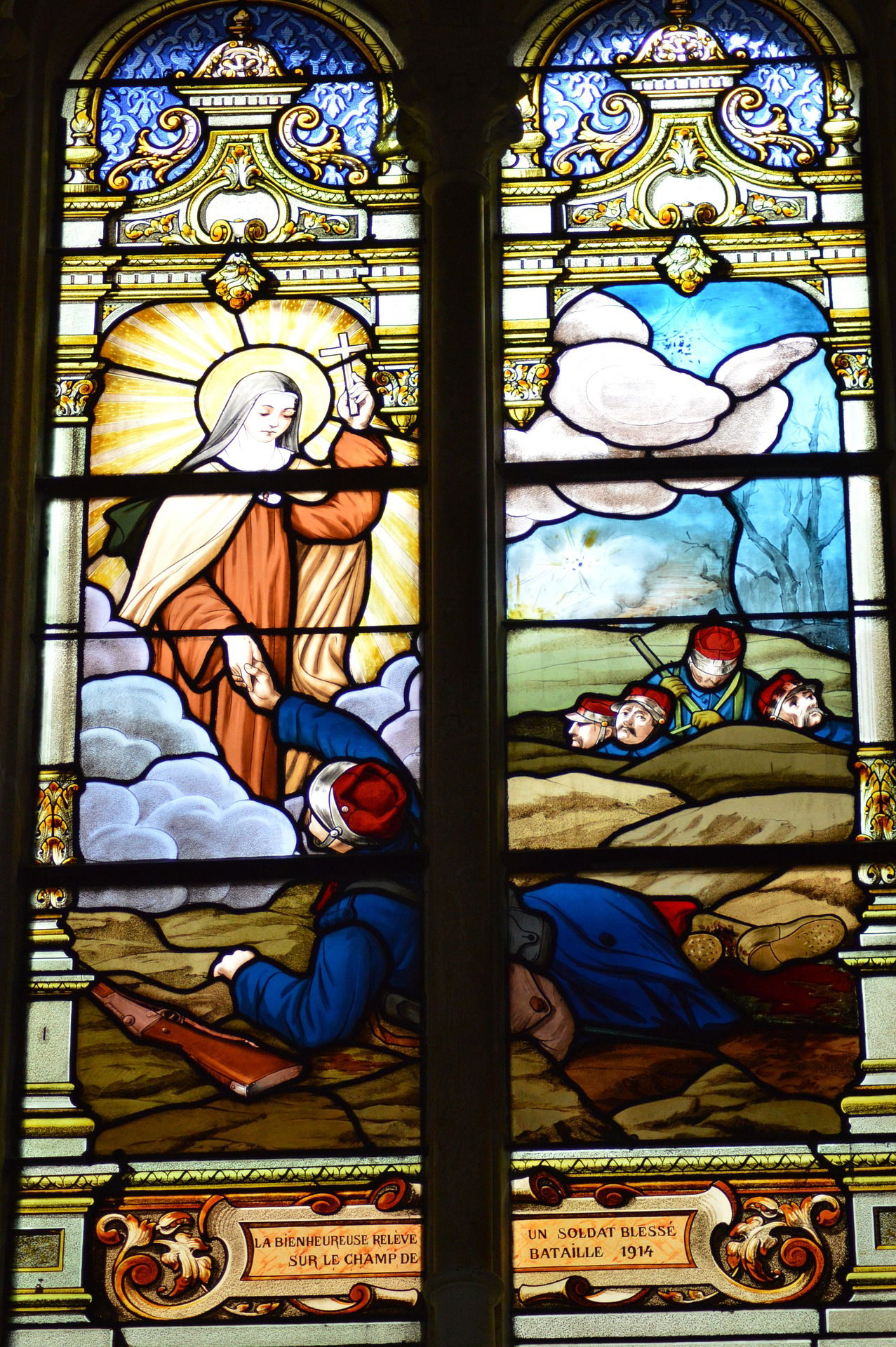
It was a period of something never seen by humanity before, a world war, the first, between the years 1914 to 1918. Families around the world stunned to see their loved ones leave for an insane battle between almost all countries in the world . In that period, the greatest weapon of war was armed soldiers going to the front to attack enemy soldiers hand-to-hand. The deaths were vast and of terrible forms, with high odds of not returning home. But there was a saint who had died a few years before and who promised her intercession for whoever asked her: Saint Therese. And his fame expanded with the release of his autobiography called The Story of a Soul, written by his sister, also a Carmelite from Carmel in Lisieux . Well, in a world war even many atheists and far from God despaired and asked for intercession or even their family members who at that moment were getting to know her with the spread of her holiness throughout the world. She wouldn't let them go !!!
Countless were the letters sent by soldiers or their families to Carmelo de Lisieux , where Santa Teresinha resided, witnessing her intercessions and protection during the first war. The Carmelites gathered all the soldiers' letters, which added to the reports of other intercessions from her, totaled 3,200 testimonies. They published it as a single document with 10 volumes in 1926 called : Rains of Roses - a name referring to his promise to pour rains of roses on the earth. See some brief reports below painted in paintings by the Carmelite sister of Santa Teresinha:
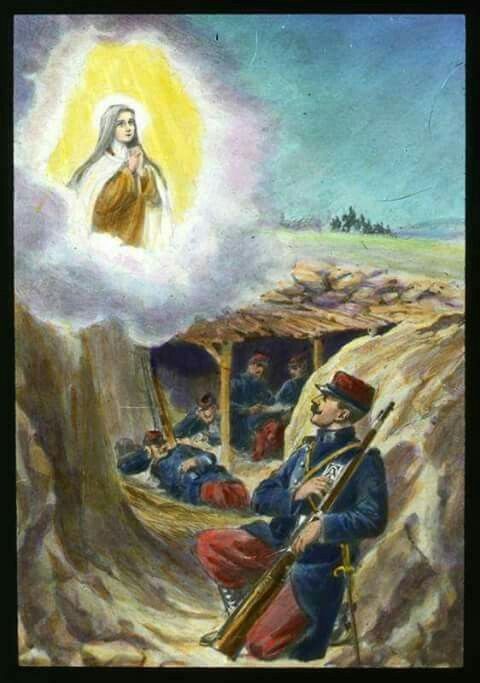
Source: ordocarmelitarum
"In mid-September we were in the trenches (...), in a difficult situation, as the enemy's artillery never ceased to thunder. Thinking with great sadness of my little family, I prayed: my sister Teresa, I beg you, return her I love my wife and my children and I promise to visit your tomb soon after I return to my homeland. I had barely finished saying this prayer when I saw a cloud open and the face of the saint appeared in the blue sky. hallucination, I rubbed my eyes several times and looked at the vision again. But I could not have any doubt, as her face showed itself more and more clear and resplendent. I was able to contemplate her like that for about two minutes. I observed above all her beautiful raised eyes to heaven as if to pray. Since then I have always been courageous, I no longer felt alone. I also had the firmest hope of finding my family again and I made the unshakable resolution to return to the God of my childhood. illness I was removed from the front and taken to the hospital. And when there, someone asked who wanted to receive communion, I wasn't afraid to express my desire". Returning home, he followed the paths of the church he had abandoned.
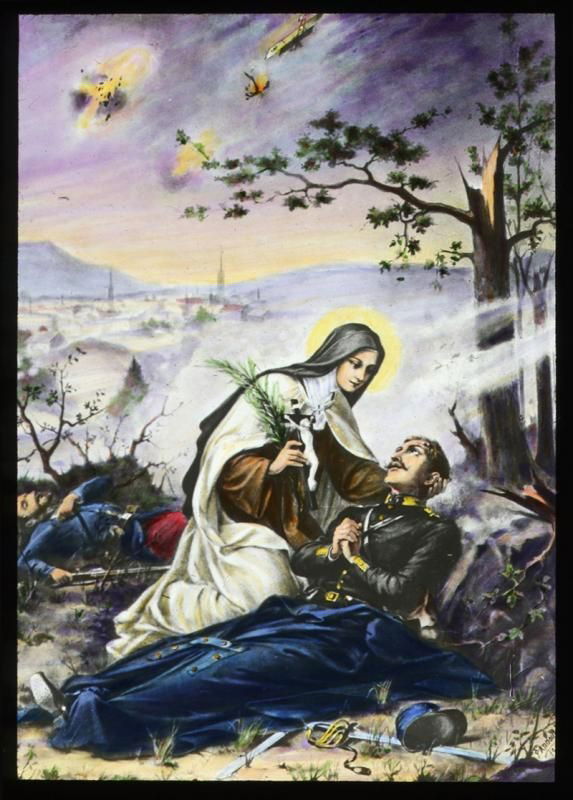
Source: Les archives du Carmel de Lisieux
In this other painting by the sister of Santa Teresinha, she appears to a soldier wounded in battle to help him in his despair and loneliness in the midst of that dark place.
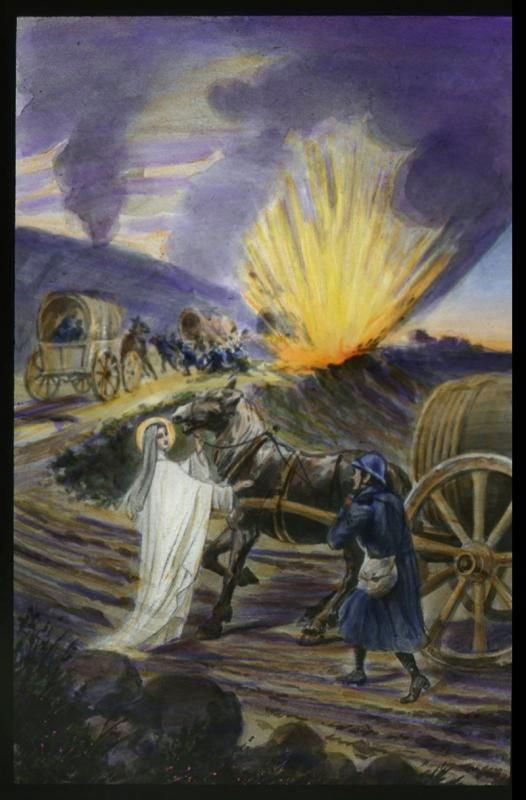
Source: Les archives du Carmel de Lisieux
A soldier proceeded with his cart about to be hit by a cannonball. Before that happened, Santa Teresinha appears on the way and prevents him from proceeding, as depicted in the picture above.An atheist soldier, in the midst of the torments of war and fear of losing his soul, seeks Santa Teresinha and she achieves his conversion and renewal of his faith.
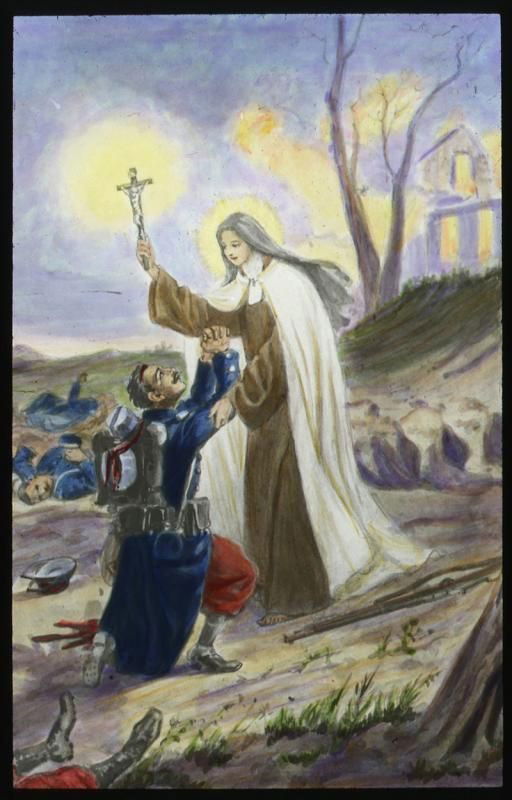
Source: Les archives du Carmel de Lisieux
In this apparition, the saint warns a sergeant that his trench is about to be attacked, not being taken by surprise.
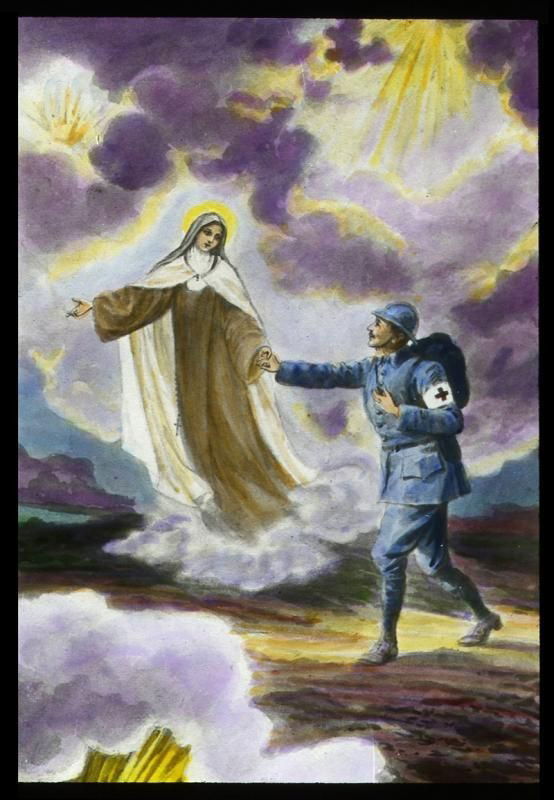
There were wounded soldiers who needed quick help. In war, every minute is valuable to save a life. For this purpose, Santa Teresinha locates a military doctor, appears to him and leads him to those in need of medical attention. Beautiful painting also painted by your sister.
References:
Misericórdia Play. Santa Teresinha foi a Guerra? // Instituto Hesed
Nous les Poilus. Plus forte que l’acier – Lettres des tranchées à Thérèse de Lisieux. Paris: Du Cerf, 2014.